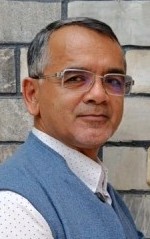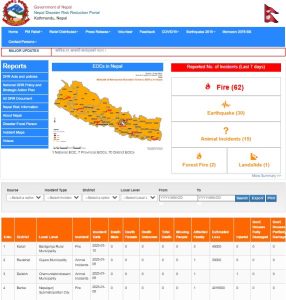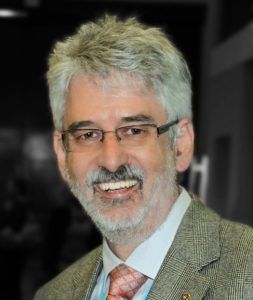IN A NUTSHELL
Author's Note
 The employment crisis among newly graduated doctors in the Kurdistan Region of Iraq (KRI) reflects broader structural challenges in healthcare workforce management across LMICs. While medical graduates are being produced at rates exceeding available positions, public sector hiring has slowed due to austerity measures and financial constraints. This mismatch leads to prolonged job searches, volunteer-based work, and shifts to non-medical fields, with nearly half of employed doctors in KRI working outside the medical profession. The expectation of prior experience creates a significant entry barrier for new doctors, further exacerbating unemployment trends.
A critical consequence of this paradox is the increased migration of doctors from LMICs to higher-income countries in search of stable employment and professional development opportunities
The employment crisis among newly graduated doctors in the Kurdistan Region of Iraq (KRI) reflects broader structural challenges in healthcare workforce management across LMICs. While medical graduates are being produced at rates exceeding available positions, public sector hiring has slowed due to austerity measures and financial constraints. This mismatch leads to prolonged job searches, volunteer-based work, and shifts to non-medical fields, with nearly half of employed doctors in KRI working outside the medical profession. The expectation of prior experience creates a significant entry barrier for new doctors, further exacerbating unemployment trends.
A critical consequence of this paradox is the increased migration of doctors from LMICs to higher-income countries in search of stable employment and professional development opportunities
Treasurer, Health Systems Global, Edinburgh, UK
Stethoscopes on Hold: Exploring the Employment Crisis Among New Doctors in the Kurdistan Region of Iraq
Despite a global shortage of healthcare workers, many low- and middle-income countries (LMICs), including those in the Middle East and North Africa (MENA), paradoxically face high unemployment rates among doctors and healthcare professionals (Hutchinson et al., 2025). This issue arises due to inefficient workforce planning, economic constraints, and mismatches between medical education and labor market demands. In many cases, newly trained doctors struggle to find employment while healthcare systems remain understaffed.
Retention challenges persist, and one of the key concerns is the difficulty in keeping medical professionals engaged in their home countries. A review of retention strategies found that incentives such as financial support, compulsory service requirements, and career development programs can help, but no single method proved universally effective. Meanwhile, brain drain remains a pressing issue in MENA, where thousands of doctors migrate to higher-income countries seeking better opportunities (Al Saraf & Garfield, 2008; Chikanda et al., 2014; Mullan, 2005).
In Iraq and the Kurdistan Region, healthcare workforce challenges are exacerbated by economic instability and political tensions (Tawfik-Shukor & Khoshnaw, 2010). While there is an oversupply of medical graduates, austerity measures and budget constraints have limited job creation, leading to unpaid or volunteer-based healthcare work (Zangana & Muhammad, 2024) Many graduates struggle to find secure employment in public hospitals, preferring public sector roles for perceived stability, but financial hardships have made consistent hiring difficult. In Kurdistan, female healthcare workers are disproportionately affected by unpaid positions, highlighting systemic inequities.
Job dissatisfaction among medical professionals in LMICs often stems from poor working conditions, low salaries, and limited career progression (AL-Abrrow et al., 2021). A systematic review indicated that improving salaries and offering career development opportunities could enhance retention rates (Willis-Shattuck et al., 2008). However, in MENA, structural employment barriers persist due to economic constraints restricting government healthcare hiring, mismatches between medical education and labor market needs, political instability disrupting workforce planning, and limited job creation forcing professionals into informal or volunteer work.
A particularly concerning phenomenon in some LMICs, including Sierra Leone and parts of Iraq, is the existence of unpaid health workers. Many rely on informal coping strategies, worsening healthcare inequities and workforce instability. Without effective policies to absorb excess medical graduates, doctor unemployment remains a critical issue that requires urgent intervention.
The problem of unemployed doctors and healthcare workers in LMICs and MENA is multifaceted, requiring targeted interventions in workforce planning, financial incentives, and healthcare system reforms. Countries must balance medical education with labor market demands while ensuring fair employment conditions for healthcare professionals. Future research should evaluate retention strategies and address systemic barriers to employment.
Methods
This study employed a cross-sectional design using an online survey to explore the employment status, career trajectories, and psychosocial impact of unemployment among newly graduated doctors in the Kurdistan Region of Iraq (KRI).
Survey Design and Distribution
A structured questionnaire was developed and hosted on Google Forms. The survey was designed to capture both quantitative and qualitative data, including demographic information, employment status, job search duration, mental well-being, perceived family/community support, and willingness to change careers or relocate.
The Google Form was disseminated via a WhatsApp platform specifically created for unemployed doctors in the KRI, comprising 627 newly graduated doctors actively seeking employment in the public sector. Participation was voluntary and anonymous, and no incentives were offered for completion.
Data Collection and Response Rate
The survey remained open for responses for a defined period, during which 241 doctors completed the questionnaire. This corresponds to a response rate of approximately 38.44% (241 out of 627).
Data Analysis
Quantitative data collected through the Google Form were exported into Microsoft Excel for cleaning, coding, and analysis. Descriptive statistics were calculated to assess demographic patterns, employment distribution, search duration, and mental well-being indicators. Categorical variables were summarized using counts and percentages, while continuous variables (e.g., search duration) were analyzed using measures of central tendency (mean and median). Chi-squared tests and Cramer’s V were used to explore potential associations and correlations between key variables. Additionally, open-ended responses were reviewed to identify recurring themes and systemic challenges.
Results
Demographic Trends in Unemployment
Analysis of age-related unemployment patterns indicates that doctors aged 24 years are the most affected group across the dataset. Gender-based analysis reveals that 25-year-old males in Erbil experience the highest unemployment rate. When stratified by governorate, Erbil emerges as the region with the highest overall unemployment among doctors.
Employment Patterns and Sectoral Distribution
Employment distribution data show that approximately 48.21% of employed doctors are working in the medical field, while 51.79% are employed in non-medical fields. This indicates a slight predominance of non-medical employment among doctors. Among non-medical roles, Marketing and Education are the most frequently reported sectors, with Marketing being the most prevalent.
Job Search Duration
The average duration that doctors have been actively searching for a medical-related job is approximately 7.16 months. This average is marginally higher than the median, suggesting a right-skewed distribution where a subset of doctors experience prolonged periods of unemployment. A bar chart visualization confirms these central tendencies, aiding in comparative interpretation.
Willingness to Relocate
An anomaly was noted in the dataset where 0.0% of unemployed doctors were reported as willing to relocate. This figure is likely due to a coding error involving incorrect column usage (‘Have you thought about changing careers due to unemployment?’ was used instead of ‘Would you consider relocating outside the Kurdistan Region or Iraq for a medical job?’). A Chi-squared test returned a p-value of 1.0, indicating no statistically significant association between employment status and willingness to relocate. However, recalculations with corrected variables are needed for accurate interpretation.
Mental Well-being and Social Support
Unemployment has a pronounced negative effect on doctors’ mental well-being:
- 198 doctors reported being very negatively impacted,
- 39 doctors reported a somewhat negative impact, and
- Only 3 doctors reported no impact on their mental health.
Regarding perceived family and community support:
- 111 doctors reported feeling somewhat negatively supported,
- 84 doctors reported no impact, and
- 38 doctors reported feeling very negatively supported.
A weak positive correlation was observed between perceived support and mental well-being (Cramer’s V = 0.223), indicating that while community support may play a role, other factors also significantly influence psychological outcomes. Notably, doctors experiencing a very negative mental health impact were found across all levels of perceived support, with the largest group feeling only somewhat supported.
Career Change Considerations
A substantial proportion of doctors reported considering a career change:
- 40% of unemployed doctors and
- 97% of employed doctors
have thought about changing careers. The difference between the two groups is only 0.43%, suggesting that employment status is not the primary driver behind this decision. This points to broader systemic or professional dissatisfaction affecting both groups similarly.
Regional Variation in Job Search Duration by Age
Correlation analysis revealed significant regional variability in how age relates to job search duration. For instance:
- In Sulaymaniyah, a positive correlation was observed, indicating that older doctors tend to search longer for jobs.
- In Erbil (Hawler), a negative correlation was identified, suggesting that older doctors find jobs more quickly.
These patterns may reflect differences in local job markets, socio-economic conditions, or access to professional networks. Further investigation is warranted to understand these dynamics and inform the design of region-specific employment support programs.
Structural Barriers to Employment
Open-ended survey responses identified “experience” as the most commonly cited challenge and a key contributor to unemployment. Respondents also pointed to systemic barriers such as the role of government ministries, inequities between public and private sectors, and broader political factors. Text analysis also revealed a high frequency of generic terms (e.g., “the,” “in,” “not”), indicating the need for refined natural language processing techniques such as n-gram analysis or topic modeling to uncover deeper themes and actionable insights.
Discussion
The employment crisis among newly graduated doctors in the Kurdistan Region of Iraq (KRI) reflects broader structural challenges in healthcare workforce management across LMICs. While medical graduates are being produced at rates exceeding available positions, public sector hiring has slowed due to austerity measures and financial constraints. This mismatch leads to prolonged job searches, volunteer-based work, and shifts to non-medical fields, with nearly half of employed doctors in KRI working outside the medical profession. The expectation of prior experience creates a significant entry barrier for new doctors, further exacerbating unemployment trends.
A critical consequence of this paradox is the increased migration of doctors from LMICs to higher-income countries in search of stable employment and professional development opportunities. Countries like the UK have historically relied on international medical graduates to fill gaps in their healthcare systems. However, the accelerating departure of newly graduated doctors from regions like KRI will likely intensify competition for positions abroad, while simultaneously deepening domestic shortages in specialist training pathways.
This trend presents a dual challenge. On one hand, LMICs face a brain drain, losing skilled professionals who could contribute to national healthcare systems. On the other hand, higher-income countries such as the UK, which are already struggling to recruit doctors into specialist posts, particularly in the NHS, may see an influx of overseas doctors seeking these positions. While this might alleviate certain workforce shortages in the short term, it does not address the systemic recruitment and retention challenges faced by both LMICs and high-income healthcare systems.
Many unemployed doctors also report severe negative mental health effects, signaling high levels of stress and professional dissatisfaction, which often act as push factors encouraging migration. While international relocation is not widely pursued within KRI due to financial and logistical constraints, it is likely that the worsening employment outlook will increase migration rates over time.
Conclusion
The growing mismatch between medical education and labor market demands in LMICs, including KRI, is fueling a cycle of unemployment, career transitions outside medicine, and increased doctor migration. Without systemic reforms to align workforce planning with graduate output, newly trained doctors will continue seeking employment abroad, further exacerbating domestic shortages in specialist healthcare roles. Higher-income countries like the UK, struggling to recruit doctors into critical specialty posts within the NHS, may see an increased influx of international medical graduates. However, without addressing broader retention challenges and career progression concerns, both LMICs and high-income countries will remain caught in a cycle of workforce instability.
To mitigate these issues, policymakers must invest in sustainable job creation, targeted workforce planning, and retention strategies within LMICs to reduce forced migration due to unemployment. Simultaneously, high-income countries must implement policies that ensure international medical graduates receive fair career progression opportunities without perpetuating global inequities in healthcare staffing. Future research should focus on longitudinal tracking of doctor migration patterns, analyzing how workforce shortages evolve globally and identifying sustainable solutions for both sending and receiving healthcare systems.
References
Al Saraf, H., & Garfield, R. (2008). The Brain Drain of Health Capital: Iraq as a Case Study. In Health Capital and Sustainable Socioeconomic Development.
AL-Abrrow, H., Al-Maatoq, M., Alharbi, R. K., Alnoor, A., Abdullah, H. O., Abbas, S., & Khattak, Z. Z. (2021). Understanding employees’ responses to the COVID-19 pandemic: The attractiveness of healthcare jobs. Global Business and Organizational Excellence, 40(2), 19–33. https://doi.org/10.1002/joe.22070
Chikanda, A., Bourgeault, I. L., & Labonté, R. (2014). Brain Drain and Regain: The Migration Behaviour of South African Medical Professionals. https://www.researchgate.net/publication/280444795
Hutchinson, E., Hutchinson, E., Kiwanuk, S., Muhindo, R., Nimwesiga, C., Balabanova, D., Mckee, M., & Kitutu, F. E. (2025). The paradoxical surplus of healthcare workers in Africa: the need for research and policy engagement. In European Journal of Public Health (Vol. 34). https://academic.oup.com/eurpub/article/34/Supplement_3/ckae144.269/7844942
Mullan, F. (2005). The metrics of the physician brain drain. The New England Journal of Medicine, 17(353), 1810–1818. https://doi.org/10.1056/NEJMsa050004
Tawfik-Shukor, A., & Khoshnaw, H. (2010). The impact of health system governance and policy processes on health services in Iraqi Kurdistan. BMC International Health and Human Rights, 10, 14. https://doi.org/10.1186/1472-698X-10-14
Willis-Shattuck, M., Bidwell, P., Thomas, S., Wyness, L., Blaauw, D., & Ditlopo, P. (2008). Motivation and retention of health workers in developing countries: A systematic review. BMC Health Services Research, 8. https://doi.org/10.1186/1472-6963-8-247
Zangana, G., & Muhammad, A. K. (2024). Health Workforce Shortages and Surpluses: The Case of Unsalaried Workers in Kurdistan Region of Iraq. https://doi.org/10.21203/rs.3.rs-4682754/v1
—
By the same Author on PEAH
Navigating the Labyrinth: Addressing the Structural Challenges for IMGs in the UK Healthcare System


 The piece here is an excerpt from the final manuscript ‘Health Sector Disaster Management Handbook: Nepal’, just edited by the Author, which is soon going to print.
The piece here is an excerpt from the final manuscript ‘Health Sector Disaster Management Handbook: Nepal’, just edited by the Author, which is soon going to print.








